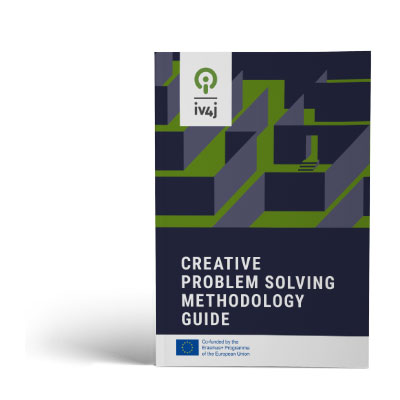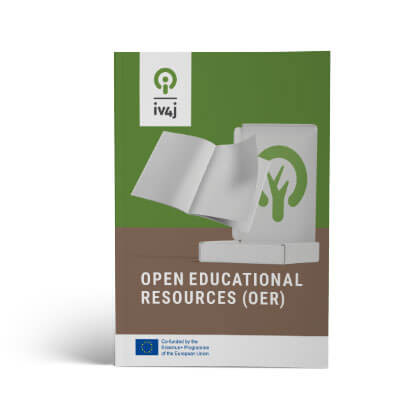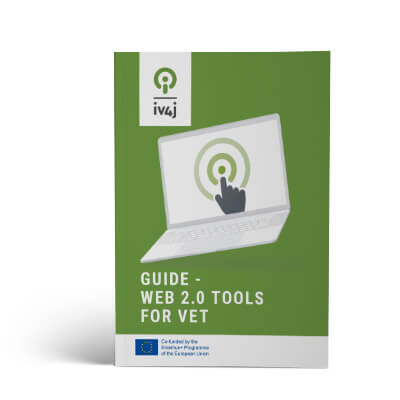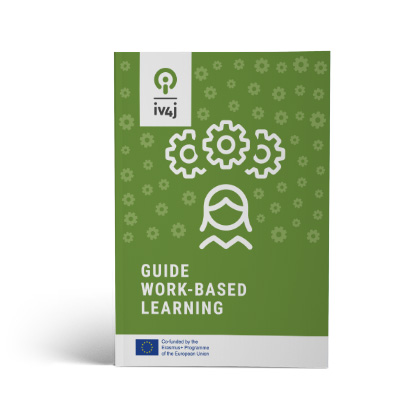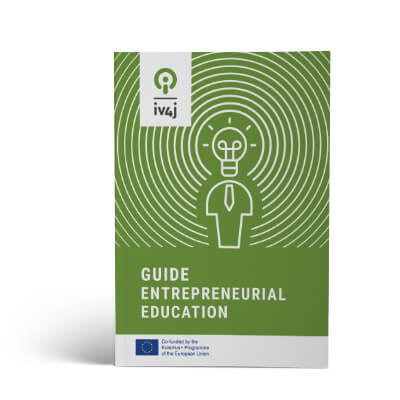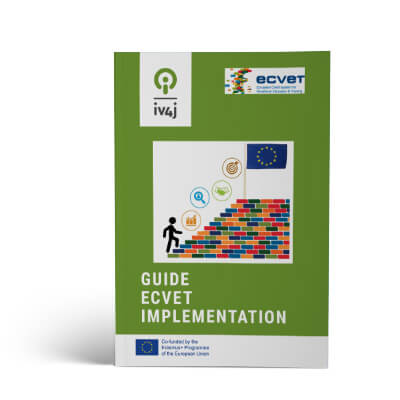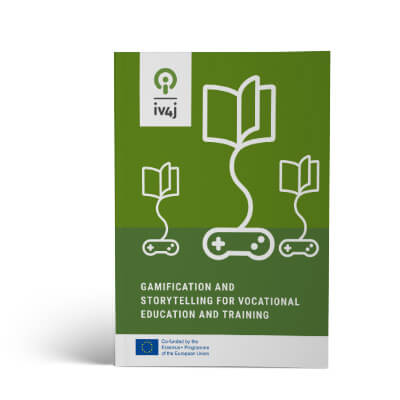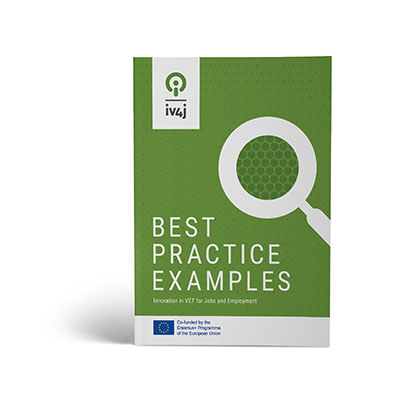Hi everybody. This is the page where you will find all the resources we work so hard to produce for you. If you find anything you like, just grab it, they're all free! Also don't forget to leave us your comments and impressions below. We'd love to hear from you!
I fyou would like to see what the results of the feedback form look so far you can see them here
Creative Problem Solving Methodology Guide
This is a guide, supported by multimedia materials and practical vision, describing the Creative Problem Solving Methodology, explaining in details how to implement it in VET, introducing tips and providing a suggested quality management system.
Chapter 1 is introducing the approach to the Creative Problem Solving all along Europe supported also by some success cases.
Chapter 2 is describing the basic of the methodology with specific attention to definitions, the blocks to the creativity and explaining in details why CPS is important for Vocational Education and Training.
Chapter 3 is introducing the explanation of divergent and convergent thinking patterns.
Chapter 4 is analysing and describing in details a large series of tools and approaches to the Creative problem Solving Methodology. The content is enriched by a focus on full descriptions, practical details (ref. how to), exercises ready to be used in VET and also practical tips to increase the effective use of selected approaches, methodologies and tools.
Guide for Open Educational Resources
This guidebook sheds light on the practical use and implementation on institutional level as well as research review on Open Educational Resources (OER). It has practical examples and a list of essential repositories and other tools and platforms suitable for OER.
The guidebook is intended for TVET/VET educators and management and produced by IV4J project funded by EU Erasmus+. All the content is shared as OER under CC BY-SA (4.0) license.
Web 2.0 Tools For Vocational Education and Training
The crucial goal of the IV4J project is to exemplify and demonstrate that and how VET (Vocational Education and Training) can benefit from the contemporary Web 2.0 methods and tools. In order to convince VET teachers and its decision- and policy makers, this IV4J project goes two steps further than just signaling that both the effectiveness and the efficiency of Web 2.0 features will increase. More important is to clarify that the essence of the learning and teaching process will evolve further in the direction of ubiquitous, continuous and life-long learning.
In order to make this mission successful, we as IV4J team have decided to carefully articulate how the Web 2.0 extensions do not necessarily disrupt the traditional culture in expertise transfer from the trainer to the apprentice; Even if we take the more drastic extrapolations of cognitive- and social constructivism, it is still possible to assimilate the more active ways of learning into the trainer-orchestrated class or workshop.
We wish you courage and inspiration in distilling this chapter’s final message and impact.
Guide to Work Based Learning
Regular education concentrates primarily on the ability to study on a life-long basis, because professions are required to deliver more complex problem solutions, both regarding soft skills and strategic intellect. Therefore, the IV4J project puts special attention on the more and more dynamic nature of abilities and attitudes of professional education; can these be trained? Must we encourage professional training to become more open towards unforeseen situations, leave our comfort zones and prepare to change?
We welcome you to our IO2 manual and we are looking forward to receiving your feedback on how you see possible consequences for practice.
Guide to Entrepreneurial Education
The aim of this Intellectual output is assess the overall state of entrepreneurial education in VET across European Commission countries and in particular, to identify innovative practices within individual partner countries. In doing so, a core entrepreneurial skill-set and framework has been developed based on recent, influential academic studies and a toolkit for teachers and students created to facilitate learning in educational stakeholders within participating countries.
A core set of entrepreneurial competences have been articulated from research sources – namely, entrepreneurial perspective, empowered autonomy and financial acumen. A toolkit has been developed to assist VET in teaching these competences to students, drawing mainly on the Business Model Canvas concept, but also incorporating elements of Finland’s ‘Me and My City’ teaching project, the Hackathon process, and findings from the Creative Problem Solving and Gamification outputs of IV4J.eu.
Guide to ECVET implementation
ECVET is an important European initiative that wants to facilitate and permit the accumulation, the certification, the transfer of credits obtained in vocational education and training (VET) in formal, informal and non-formal learning outcomes all over Europe: its objective is to facilitate the mobility of the workforce in VET across Europe.
So the intention of this Guide is to give a complete and professional tool describing and clarifying the whole ECVET methodology to maximize its use and its awareness.
So, please, follow us and discover ECVET.
Guide - Gamification and Storytelling
At the outset of innovating Vocational Education and Training (VET), we as members of the IV4J project team asked ourselves: What directions of innovation look promising in terms of ‘perceived needs’ and ‘meeting endemic values’. From pure scientific point of view, operationalizing “Quality of Learning” is one of the hardest nuts to be cracked; Once listing all relevant dimensions of learning processes and outcomes, there is no end.
A good entrepreneur does not follow what his/her customers wants now. It is a matter of narrating to your potential customer in order to create his/her need of tomorrow. Here is where gamification and narrification come in: It helps VET students to open and additional mindset. The real job for IV4J now is to find effective design rationales on how to weave gamification and storytelling in existing curricula. Rather than delivering hard-core recipes, we claim that VET trainers need to go through a set of experiences how gaming and telling opens addi-tional genres for our mentor roles in entrepreneurial stages of VET
The guidebook is intended for TVET/VET educators and management and produced by IV4J project funded by EU Erasmus+. All the content is shared as OER under CC BY-SA (4.0) license.
Best Practice Guide
We searched for great innovative examples of ways to improve Vocational Education and Training. We looked in all our countries and beyond. Each partner found 6 examples so we had 42 in total. Out of those we picked the best 10 so you can see only what impressed us the most. This is our Best Practice Guide, you can see it by clicking the button below.
If you feel like seeing all our Good Practice examples you can also find them on the bottom of this page.
Update: The best practice guide is now available in all project languages:
English, German, Finnish, Italian and Dutch
What we do Leaflet
If you are still wondering what we are trying to do in this project, you can just read this leaflet and find out.
If you would like to print this leaflet, if you would like to read this leaflet in all our project languages, you can use the button below to go to our resources and wiki website.

